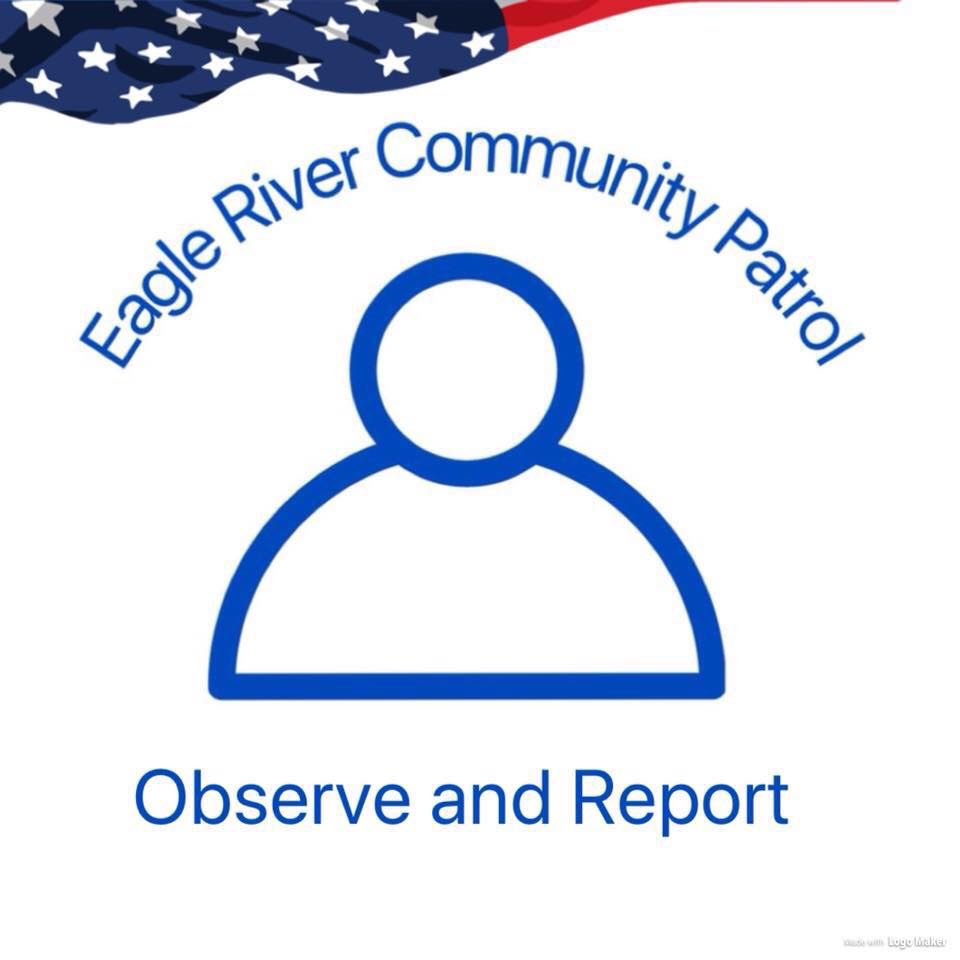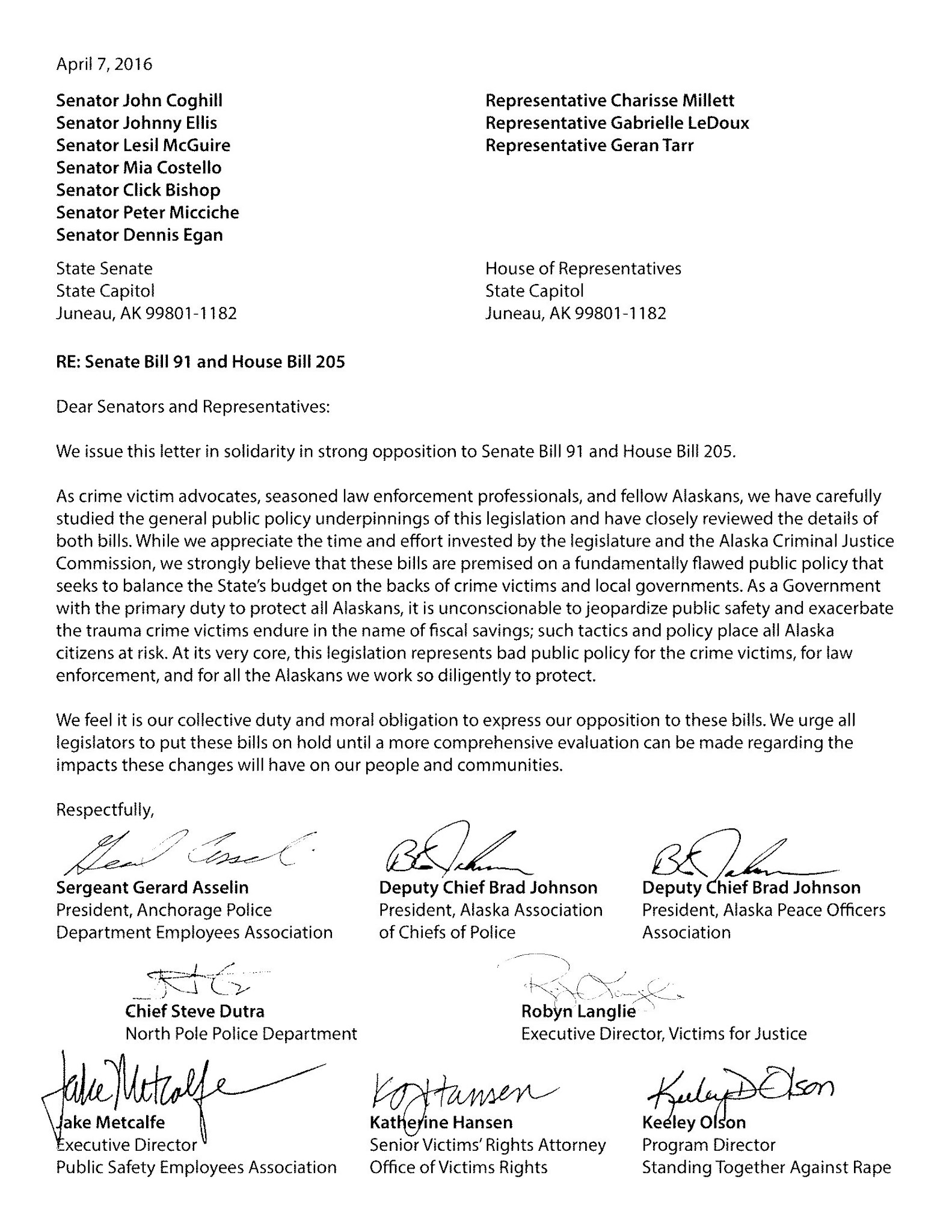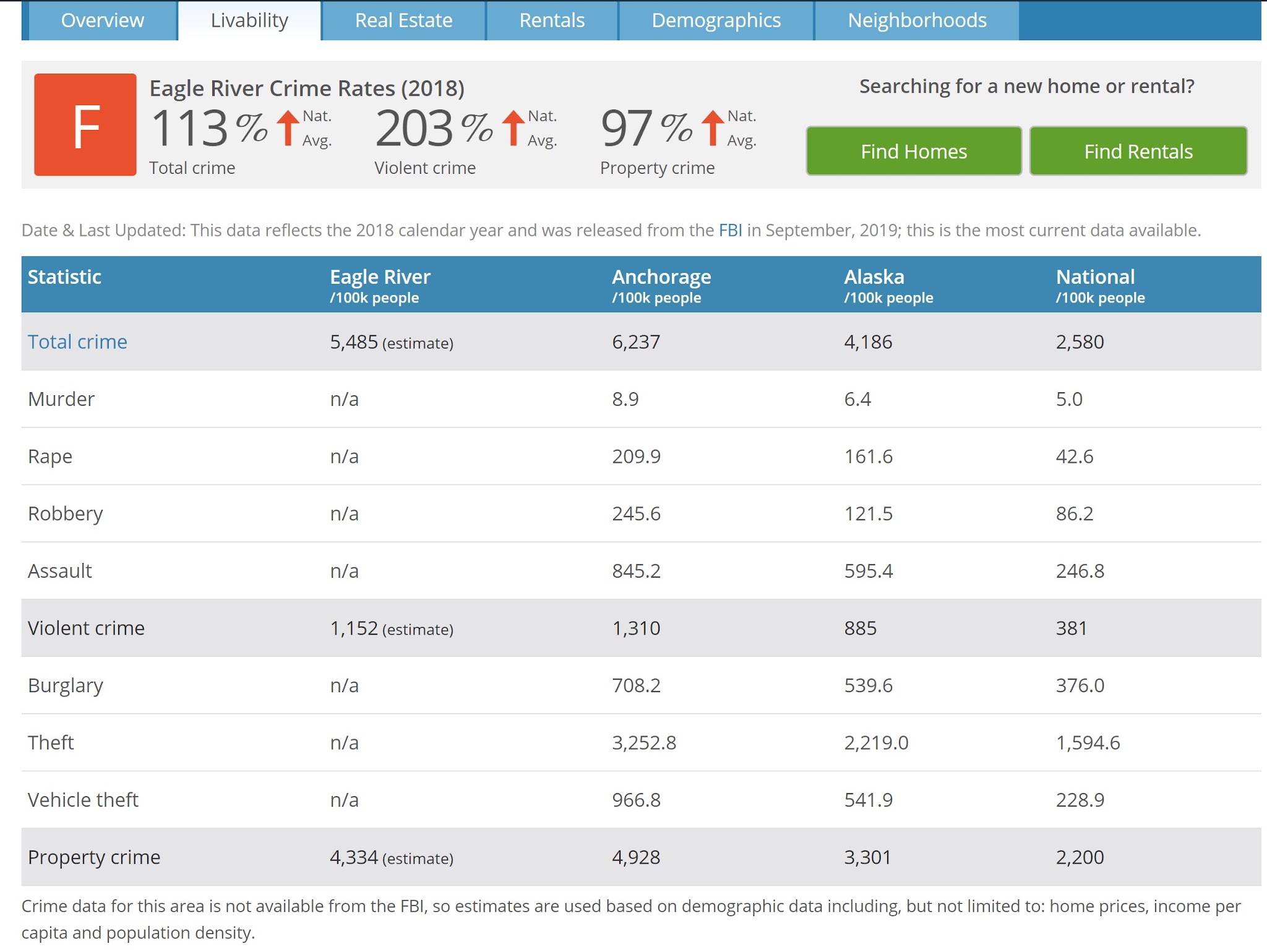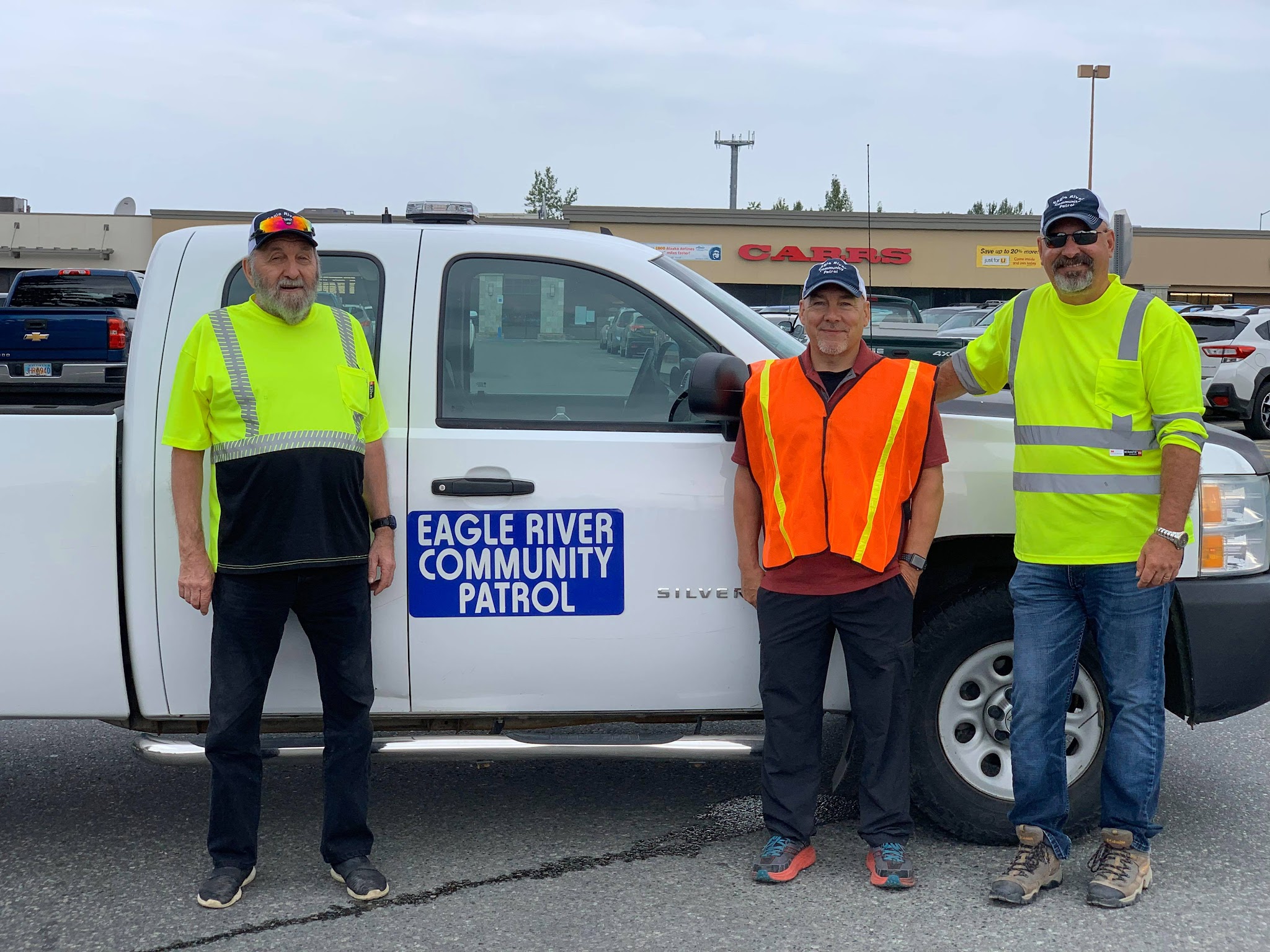The Long View of Crime in Alaska
(2020©donnliston.co)
During the 1970s construction of the Trans-Alaska Pipeline we saw our state transformed by crime; as also happened in previous fur and gold rushes. It happened simultaneous to the influx of people flooding here to build that engineering marvel, while some others arrived for diabolical purposes. As a reporter for the Anchorage Daily News during this time I participated in an investigative project resulting in a self-congratulatory story headlined: The Mob Moves In.
Sensationalism sells newspapers.
We were young and imagined ourselves “investigative reporters” there at the baby ink colored shop on Post Road. As part of that project I talked to people I knew were involved in criminal enterprises and we conjured up a scenario of criminal networks taking over our community and state. We told our readers crime was everywhere because, as the underdog newspaper the Daily News was striving for recognition in a two newspaper town.
The result of all the concern about crime, with testimony from people who had been mugged and photos of chilled hookers—reportedly available on nearly every corner in Downtown/Spenard–as the Alaska Legislature passed crime laws that required criminals to be held accountable–even if we had to ship their sorry asses someplace else to serve prison time.
Later Howard Weaver and a different crew would win a Pulitzer Prize for the Daily News by pointing out that the real criminals were the Alaska Teamsters Union. They needed somebody specific to blame, you know.
Crime Reform Brings Crime Wave
Over the decades of prosperity since those early days of blissful naiveté—resulting from that pipeline building boom turned into state government spending frenzy—a lot of people from other places where crime is a cost of doing business have showed up. Many of them live in Alaska’s armpit, the Los Anchorage, and love to tell and show us bumpkins educated in Alaska schools how things could be improved with THEIR ideas.
Have you driven around Anchorage much lately? There you can see for yourself the enlightened approach to how we should manage crime and coddle criminals. And the problem seems to be getting worse, but with modern technology our crime is documented well:[1]
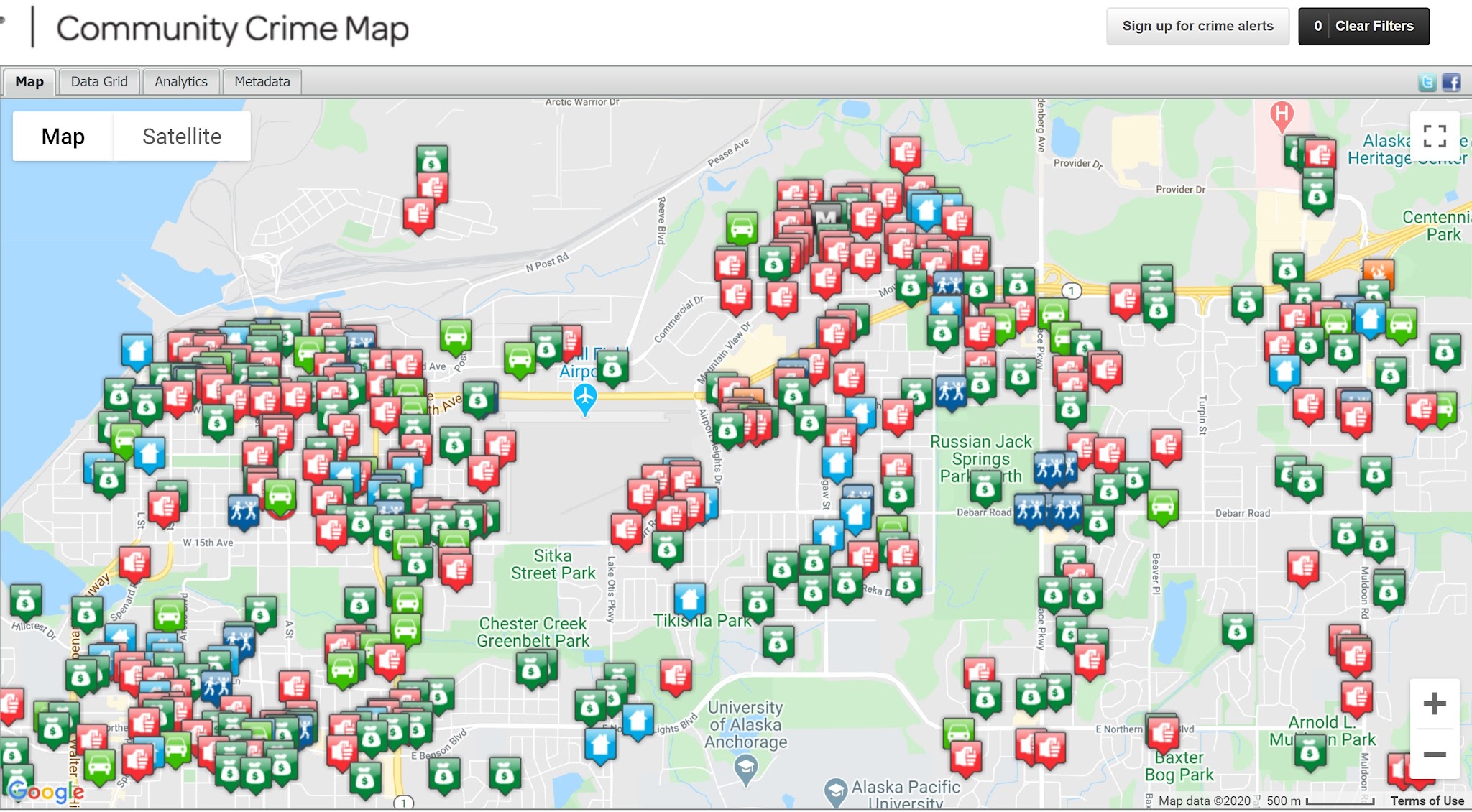 |
| Crime is everywhere in Anchorage! |
We send our elected officials to Juneau to solve Alaska problems; our biggest
state government problem is the oil bonanza seems to be declining. When the pipeline was being constructed we were told to expect the oil rush to last until the early 1990s. So, given our good fortunes these many years later, what did legislators do in collaboration with one-term fake Republican turned Independent governor, Bill Walker?
Answer: They overhauled the criminal code–to save money–beginning with a 2014 Alaska Criminal Justice Commission:[2]
Alaska Criminal Justice Commission
Seeking a comprehensive review of the state’s corrections and criminal justice systems, the 2014 Alaska Legislature passed Senate Bill 64, which established the bipartisan, inter-branch Alaska Criminal Justice
Commission (“Commission”).
The Commission, comprised of 13 stakeholders including legislators, judges, law enforcement officials, the state’s Attorney General and Public Defender, the Corrections Commissioner, and members representing crime victims, Alaska Natives, and the Mental Health Trust Authority, was charged with conducting a comprehensive review of Alaska’s criminal justice system and providing recommendations for legislative and administrative action.
In April 2015, state leaders from all branches of government joined together to request technical assistance from the Public Safety Performance Project as part of the Justice Reinvestment Initiative, a collaboration between The Pew Charitable Trusts and the U.S. Department of Justice Bureau of Justice Assistance. Governor Bill Walker, former Chief Justice Dana Fabe, Senate President Kevin Meyer, House Speaker Mike Chenault, Attorney General Craig Richards, former Commissioner of the Alaska DOC Ron Taylor, and former Chair of the Commission Alexander O. Bryner tasked the Commission with develop[ing] recommendations aimed at safely controlling prison and jail growth and recalibrating our correctional investments to ensure
that we are achieving the best possible public safety return on our state dollars.
Over 37 pages that commission report looked at how much crime costs, how much it is likely to continue to cost given Alaska’s investment in prison facilities and criminal justice infrastructure. It arrived at recommendations for saving money by diminishing penalties. Obviously, they concluded we have better things to spend money on than protecting law-abiding Alaskans from criminals.
Also from the Commission Report:
Alaska’s prison population has grown by 27 percent in the last decade, almost three times faster
than the resident population. This rapid growth spurred the opening of the state’s newest
correctional facility – Goose Creek Correctional Center – in 2012, costing the state $240 million in
construction funds. On July 1, 2014, Alaska’s correctional facilities housed 5,267 inmates, and the
Department of Corrections (“DOC”) had a fiscal year operating budget of $327 million.
Result of the report’s 21 recommendations caused profound change to Alaska Law:[3]
29th Legislature(2015-2016)
BILL HISTORY/ACTION FOR LEGISLATURE
SB 91
CHAPTER 36 SLA 16
07/11/2016
Final BILL VERSION: HCS CSSSSB
91(FIN) AM H
SHORT TITLE: OMNIBUS CRIM
LAW & PROCEDURE; CORRECTIONS
SPONSOR(S): SENATORS
COGHILL, Ellis, McGuire, Costello, Bishop, Micciche, Egan
TITLE: “An Act relating to civil in rem forfeiture actions; relating to criminal law and procedure; relating to controlled substances; relating to victims of criminal offenses; relating to probation; relating to sentencing; relating to treatment program credit for time spent toward service of a sentence of imprisonment; relating to the Violent Crimes Compensation Board; establishing a pretrial services program with pretrial services officers in the Department of Corrections; relating to permanent fund dividends; relating to electronic monitoring; relating to penalties for violations of municipal ordinances; relating to parole; relating to correctional restitution centers; relating to community work service; relating to revocation, termination, suspension, cancellation, or restoration of a driver’s license; relating to identification cards and driver’s licenses for parolees; relating to the disqualification of persons convicted of certain felony drug offenses from participation in the
food stamp and temporary assistance programs; relating to the duties of the commissioner of corrections; amending Rules 32, 32.1, 38, and 43, Alaska Rules of Criminal Procedure; and providing for an effective date.”
This bill became law against the urging of many in the criminal justice system and a review of testimony received by our elected officials (provided at akleg.gov with the bill) will show many predicted what would happen.
Sleepy Eagle River Awakens
Alaskans who must live in proximity to Anchorage often choose to live in nearby suburbs like Eagle River, Chugiak, and Peters Creek–as I do myself–in homes built on larger than typical city lots. We have dogs and guns and neighbors who look out for each other, but the crime wave brought on by this legislation created a sense of vulnerability. In 2017 I wrote about one local resident, retired military man Cliff Cook, who stepped up to form the Eagle River Community Patrol.[4]
He did this because the situation was getting out of control.
So, what has happened since then?
A new governor, Michael Dunleavy fulfilled one of his primary campaign promises on July 8, 2019 when he signed into law SB 49, repealing and replacing the failed SB 91 disaster inflicted upon Alaskans by our elected officials in Juneau. In fact, on the day this bill was signed the Alaska Legislature was holding split special sessions 800 miles apart in Wasilla and Juneau, spinning their wheels.
Alaska’s crime statistics have gone through the roof as verified by the FBI and members of our own administration. Our property crimes are higher than most places in the United States. Our sexual assault rates are unspeakable. We have one of the highest murder rates in the country. But that’s going to change with the advent of this bill being signed today, said Dunleavy at the bill signing ceremony at the Alaska Department of Public Safety Lake Hood Hangar. This isn’t going to fix it all, this is just the beginning. This is going to allow the thin blue line, Troopers, corrections, local police, all of law enforcement- it’s going to give them the tools to catch these criminals, hold these criminals, prosecute these criminals, and sentence these criminals.[5]
But the good news from this debacle of the Walker Administration and the Legislative Majority is some Alaskans remembered we are inclined toward independence and self-sufficiency! While the Chugiak area has had community patrols for 13 years, Eagle River today also has a functioning community patrol run entirely by community volunteers.
We have been going three years now, explained Cook during an interview in
mid-June. We have eight members; we were standing up five but more people wanted to step up, so now we have eight active members. We were doing very well with that number until the Covid Pandemic. We have some older folks with underlying medical conditions so we followed the Coalition of Community Patrol’s recommendation that we back off a little bit. We had some conversations with the Anchorage Police Department (APD) and they didn’t see a problem with what we were doing. They encouraged us to go back out. They said “do what you want” and we re-assessed the risk. Those who didn’t want to go out, that’s fine, but the ones who did want to did go out.
Citizens taking responsibility for their community. They collaborate with the police and they provide a deterrent to stupid people who end up dealing with the criminal justice system for being stupid.
We are all volunteers. We operate completely by donations, Cook continued. A couple of members will not even take gas cards–they pay for themselves because they want to give back to Eagle River–100 percent out of their own pocket for their gas, their lights and their signs.
There are some 15 Community Patrols in the Greater Anchorage Area; all run by volunteers who are trained in crime deterrence. They aren’t cops, or even wannabe cops. There are no paid positions; just good citizens who care about their neighborhoods.
Our main objective is deterrence–as an extra set of eyes and ears for APD, Cook explained. How you measure deterrence is difficult. We have signs on our vehicles. We are overt; we let people know we are out there and there is no question who the community patrol people are. We let potential criminals know we are out there. If they are thinking about robbing a house or business and they see us drive through they might change their mind.
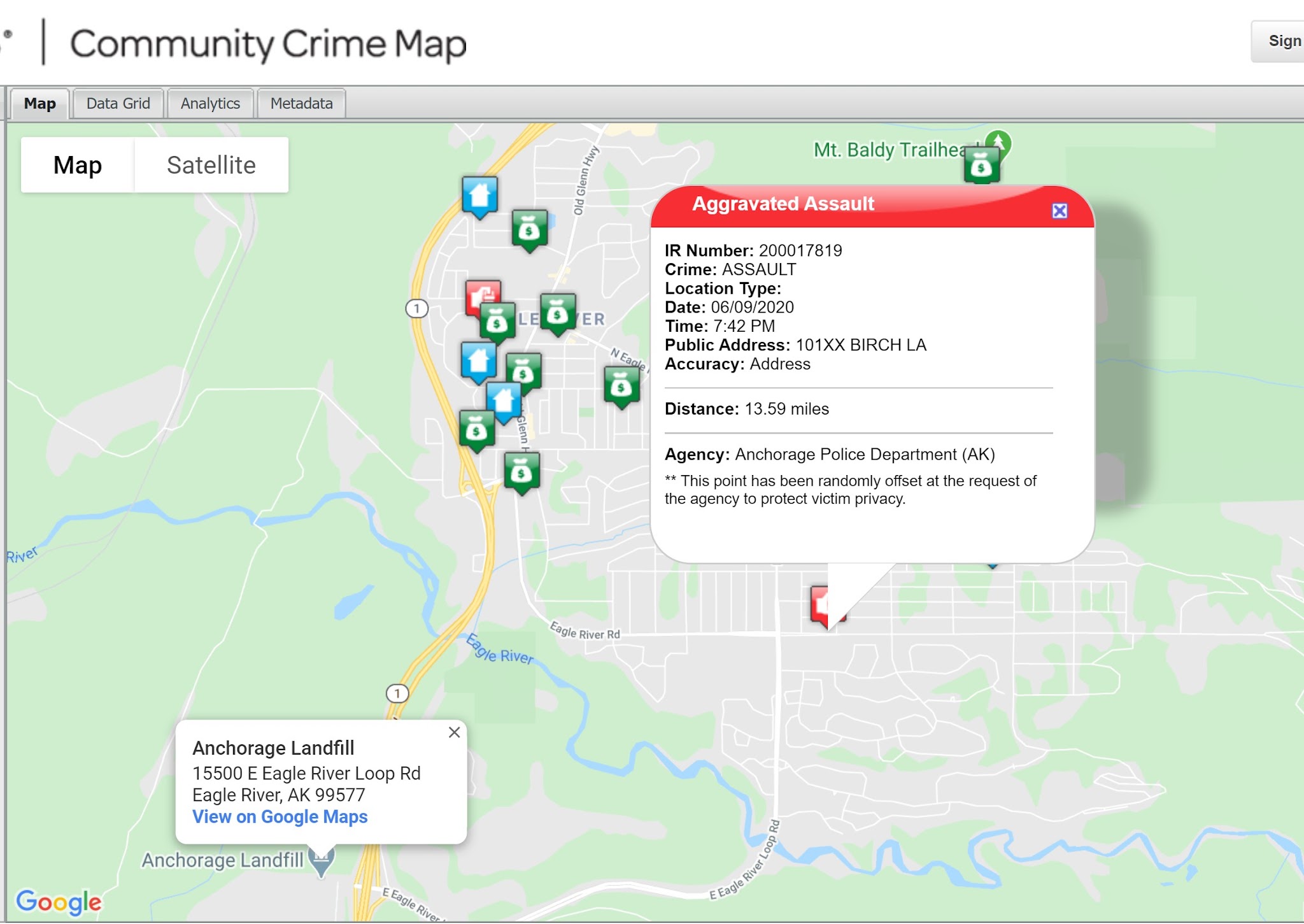 |
| Recent Eagle River Crime Profile. |
Cook explained further: We do drive through the parks; they close at 11 o’clock at night. We look for the indicators, and if somebody is slumped over the wheel with their engine going, we will call APD. I don’t know their situation and for their safety I will call APD. All of us have called APD about suspicious activity.
The Eagle River Community Patrol is reaching its 3,000 hour milestone and 300,000 miles on personally owned vehicles.
Simple Message: “Take a Bite Out of Crime!”

The message is so simple we teach it to children: Responsible people don’t engage in criminal behavior.
Since 1980, McGruff the Crime Dog® has taught millions of people that the police can’t fight crime alone – crime prevention is everybody’s business and everyone can help, according to the National Crime Prevention Council. Through television commercials, comic books, live appearances, and more, McGruff has encouraged Americans to take common-sense steps to reduce crime.
Some of his favorite messages are:
- Lock doors, leave the lights on when away from home, and let neighbors know when you go on vacation
- Do things that build a sense of neighborhood and create communities that don’t produce crime and where people look out for each other and kids feel safe
- Get involved, join Neighborhood Watch, and clean up streets and parks
- Urge children and teens to protect themselves from substance abuse, bullies, and gang violence
It also means not rewarding criminal behavior by misfits among us, with minimum sentencing, to save a couple of bucks in an already bloated State Budget.
References:
[1]Community Crime Map-Anchorage
https://communitycrimemap.com/
[2]SB91 Alaska Criminal Justice Commission Report
http://www.akleg.gov/basis/get_documents.asp?session=29&docid=63797
[3]SB91 Chapter 36 SLA 16
http://www.akleg.gov/basis/Bill/Detail/29?Root=sb91
[4]Cliff Cook, “Investing in our Community”
https://donnliston.net/2017/10/investing-in-our-community-cliff-cook.html
[5]New Sheriff in Town, Must Read Alaska
https://mustreadalaska.com/new-sheriff-in-town-repeal-of-sb-91-signed-into-law/
[6]Anchorage Coalition of Community Patrols
http://accpatrols.org/index.html

